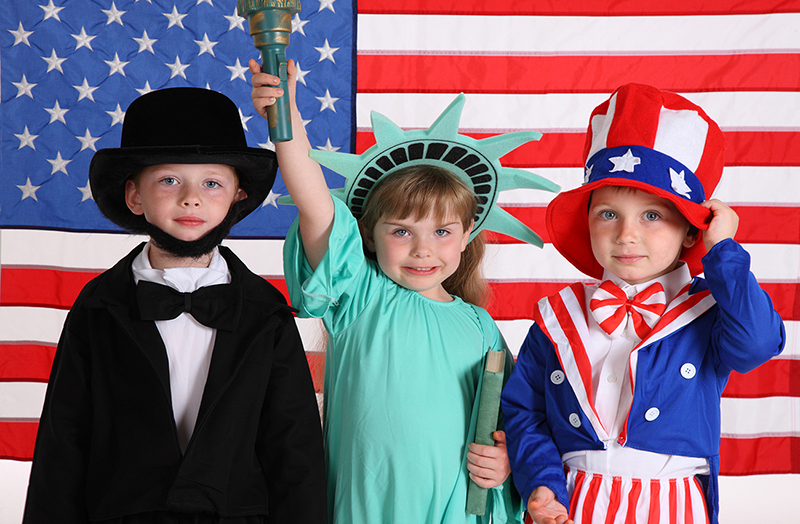10 Hands-On Social Studies Activities That Bring History to Life

Social studies can often feel like a never-ending stream of dates, names, and events. But what if history could be experienced instead of just memorized? The best way to make social studies engaging, memorable, and fun is through hands-on activities that bring the past to life!
Here are 10 interactive activities to help your elementary students see, feel, and experience history in a way they’ll never forget.
- Time Traveler’s Suitcase
🕰 Why It Works: Helps students connect with different time periods in a personal way.
🔹 How to Do It:
- Have students choose a historical figure or time period.
- They must create a time traveler’s suitcase filled with objects (real or illustrated) that would have been used during that era.
- Encourage students to explain their choices in a class presentation.
📌 Teacher Tip: Let students use a shoebox as a suitcase and include “artifacts” like old coins, diary pages, and photos.
- Living Wax Museum
🎭 Why It Works: Encourages deep research and public speaking skills.
🔹 How to Do It:
- Each student picks a historical figure to portray.
- They dress up as their character and prepare a 1-2 minute speech in the first person.
- Set up a “wax museum” where students stand still until a visitor “presses a button” to hear their historical figure speak.
📌 Teacher Tip: This is a great activity for Open House or parent nights!
- Build a Historical Landmark
🏛 Why It Works: Encourages teamwork and deepens understanding of historical structures.
🔹 How to Do It:
- Assign students famous landmarks like the Great Wall of China, the Lincoln Memorial, or the Colosseum.
- Let them recreate the landmark using clay, cardboard, Legos, or Minecraft.
- Have them explain its historical importance to the class.
📌 Teacher Tip: If space is limited, go digital—students can build their models in Google Drawings or Canva!
- Historical Recipe Cook-Off
🍲 Why It Works: Connects history with culture, making it more tangible.
🔹 How to Do It:
- Assign different historical periods or cultures (Ancient Egypt, Colonial America, etc.).
- Have students research and make a dish that people would have eaten during that time.
- Let students bring in samples (or describe the recipe) and explain the history behind it.
📌 Teacher Tip: Some easy-to-make historical recipes include Johnnycakes, ancient Roman honey cakes, or Native American corn cakes.
- Primary Source Detective
🔍 Why It Works: Encourages critical thinking and analysis skills.
🔹 How to Do It:
- Provide students with old letters, diary entries, newspapers, or photos from history.
- Ask them to analyze and discuss:
- Who wrote this?
- What does it tell us about life at the time?
- How does it connect to what we’ve learned?
📌 Teacher Tip: The Library of Congress and National Archives have tons of free primary sources to use!
- Historical Jeopardy!
🎲 Why It Works: Turns review sessions into an exciting competition.
🔹 How to Do It:
- Create a Jeopardy-style game with categories like Famous People, Inventions, Revolutions, Ancient Civilizations, and Geography.
- Use Google Slides, Kahoot, or whiteboards to play the game.
- Reward teams with small prizes for correct answers.
📌 Teacher Tip: Kahoot has pre-made history quizzes to save you time!
- Class Constitution
📜 Why It Works: Helps students understand government and democracy.
🔹 How to Do It:
Have your class write its own Constitution by discussing:
- What rules should we have?
- How will we make decisions?
- What are our rights and responsibilities?
Compare their class Constitution to the U.S. Constitution.
📌 Teacher Tip: Use parchment paper and have students sign with **feather quills** for an authentic touch!
- Historical Dioramas
🎨 Why It Works: Reinforces learning through creativity.
🔹 How to Do It:
- Students choose a historical event or setting (like the Boston Tea Party or the Oregon Trail).
- They create a shoebox diorama depicting the scene.
- Each student presents their diorama and explains its significance.
📌 Teacher Tip: Allow students to use Play-Doh, toy figurines, or even digital tools like Google Slides to create 3D scenes.
- Newspaper from the Past
📰 Why It Works: Encourages writing, research, and creativity.
🔹 How to Do It:
Have students create a newspaper as if they were journalists from a historical time period.
They can include:
- A front-page story on a major event
- An interview with a historical figure
- A weather report from that era
- A political cartoon
📌 Teacher Tip: Use Canva’s free newspaper templates for a polished look!
- Classroom Archaeological Dig
🏺 Why It Works: Gives students a taste of real historical discovery.
🔹 How to Do It:
- Fill bins with sand, dirt, or shredded paper and bury “artifacts” like broken pottery, fake bones, or old coins.
- Give students brushes and tools to carefully excavate and analyze their finds.
- Have students write reports on what they discovered and what they think it tells us about history.
📌 Teacher Tip: If you don’t have real artifacts, print out pictures of them and bury laminated copies!
We hope you enjoy these ideas. Please share them with anyone else you think might enjoy them.
💡If you’re not on our communication list yet, you can sign up below to receive your own weekly email bursting with exciting new ideas!
You’re also welcome to join our Facebook Group called “Virtual Field Trip Ideas” for more ideas.
Happy teaching,
-The VFT Team
